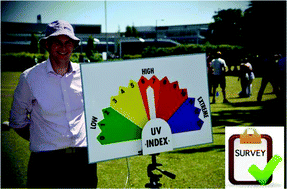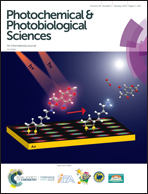Sun exposure of indoor workers in the UK – survey on the time spent outdoors
Abstract
Assessment of ultraviolet (UV) exposure is essential for evaluation of the risks and benefits to optimise public health outcomes. The exposure depends on available environmental UV radiation and individual behaviour, and it can be obtained from dosimetry studies; however, the use of dosimeters is often not feasible for large population groups or over long periods of time. In this study, a lifestyle questionnaire has been used to obtain information on the time spent outdoors by indoor workers that could be used in combination with dosimetry studies in smaller targeted groups to quantify UV exposure for health risk/benefit analysis. 894 office and laboratory workers at the Public Health England, UK, responded to the survey. Questions addressed the time of day and the duration of time; staff were outdoors on weekdays, at weekends and during holidays. The majority of the responders spent negligible time outdoors on weekdays. Outdoor activities before and after work were constrained by the work pattern and commuting. The average time for those who go outdoors before and after commuting was 22.5 ± 16.2 min and 30.4 ± 21.4 min, respectively. Only 7% of participants regularly spent their lunch break outdoors for 21.5 ± 12.2 min and weekday exposure may contribute less than 13% of the daily available erythema dose. At the weekend, on average responders spend 5.0 ± 2.6 h outdoors over the two days: if taken around midday, it accounts for approximately 50% of available UV exposure. In winter months in the UK, November to March, the combination of very low environmental UV and low ambient temperatures results in negligible UV exposure. Holidays contributed to the majority of the annual UV exposure. In summer, 45% of responders went to destinations where the UV levels may be up to 2 times higher than in the UK; durations of overseas holidays are also longer than UK breaks. The UV dose from two weeks of holiday in extreme UV index level destinations could be comparable to a 1.5–2 summer months holiday in the UK. The survey data were validated with 6 months of dosimetry within the same cohort; very strong and strong correlation was found between the survey and measurements. This shows that a lifestyle survey can be used in combination with targeted dosimetry studies in small groups to obtain information about the time spent outdoors.



 Please wait while we load your content...
Please wait while we load your content...